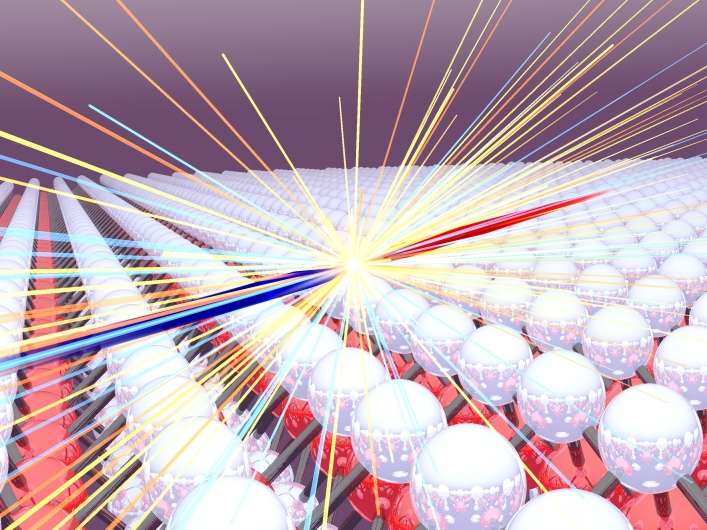Team proves that basic collider concepts from particle physics can be transferred to solid-state research

In the early 1900s, Ernest Rutherford shot alpha particles onto gold foils and concluded from their scattering properties that atoms contain their mass in a very small nucleus. A hundred years later, modern scientists took that concept to a new level, building the Large Hadron Collider in Switzerland to smash protons into each other, which led to the discovery of the Higgs boson.
However, what worked for particles like the Higgs hasn't translated to solids—until now. Experiments conducted by UCSB physicist Mark Sherwin and an international team prove that basic collider concepts from particle physics can be transferred to solid-state research. Their findings appear in the journal Nature.
"Ultimately, this approach might lead to the clarification of some of the most outstanding enigmas of condensed matter physics," said co-author Sherwin, director of UCSB's Institute for Terahertz Science and Technology and a professor in the Department of Physics. "This is a fundamentally new concept that could lead to better-designed modern materials. Our results also may one day provide a better understanding of important phases of matter such as those found in high-temperature superconductors."
Despite the fact that modern technology depends on knowing the structural and electronic properties of solids, a parallel to the atomic-level collider has been lacking in solid-state research. Within a solid, the most useful analogs to particles like protons are called quasiparticles. Think of them this way: If each person in a very large stadium is like an atom in a solid, then the audience doing the "wave" is akin to a quasiparticle.
Earlier experiments by the Sherwin group at UCSB have created quasiparticles called excitons—pairs of electrons and holes (electron vacancies) bound by the electrical force between them—and continuously accelerated them using laser beams that remain on during the entire process. But without short pulses of laser light, actual collision events were not previously observable as distinct flashes of light.
This new research employed a unique laser source at the terahertz high-field lab in Regensburg, Germany, which enabled the investigators to directly observe quasiparticle collision events. Since the quasiparticle exists for an extremely short amount of time, it was crucial to operate on ultrashort timescales. If one second were stretched to the age of the universe, a quasiparticle would only exist for a few hours.
The scientists produced collisions within excitons in a thin flake of tungsten diselenide. A light wave of the terahertz pulse accelerated the electrons and holes of the exciton within a period shorter than a single oscillation of light (1 terahertz means 1 trillion oscillations per second).
The experiment demonstrates that only excitons created at the right time lead to electron-hole collisions, just as in conventional accelerators. However, this process of recollision generates ultrashort light bursts that encode key aspects of the solid. These laboratory observations have been supported and explained by a quantum mechanical simulation performed by co-authors at the University of Marburg in Germany.
"These time-resolved collision experiments in a solid prove that the basic collider concepts that have transformed our understanding of the subatomic world can be transferred from particle physics to solid-state research," Sherwin said. "They also shed new light on quasiparticles and many-body excitations in condensed matter systems."
More information: F. Langer et al, Lightwave-driven quasiparticle collisions on a subcycle timescale, Nature (2016). DOI: 10.1038/nature17958
Journal information: Nature
Provided by University of California - Santa Barbara





















